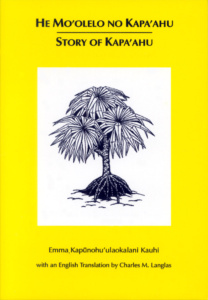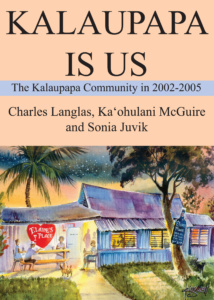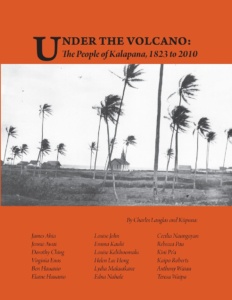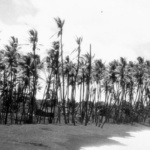He Mo‘olelo no Kapa‘ahu/ Story of Kapa‘ahu (1996)
Stories by Emma Kapunoho‘ulaokalani Kauhi about her early life growing up in the Hawaiian village of Kapa‘ahu in Puna, Hawai‘i Island, between 1916 and 1935. The book contains the stories as they were told in Hawaiian by Mrs. Kauhi, then translated into English by Charles Langlas. Together the stories provide a vivid picture of rural Hawaiian life in the early Twentieth Century.
Kalaupapa Is Us: The Kalaupapa Community in 2002-2005
Describes life in the Kalaupapa Settlement for Hansenʻs disease patients, a community divided among three groups—the patients, the Hawaiʻi Department of Health workers who serve them, and the National Park Service staff who care for the area.
The authors went to Kalaupapa in 2001 to study the tiny community of Kalaupapa, sited on a peninsula that juts out from the base of the cliff that forms the north shore of Molokaʻi Island, Hawaiʻi. Read more>
Under the Volcano: the People of Kalapana, 1823-2010
A documentary and oral history of the Kalapana Hawaiian community. It is significant as one of the few Hawaiian communities that persisted on the land into the twentieth century. Kalapana lies downslope from Kīlauea, the most active Hawaiian volcano. Encroaching lava flows forced the community to move away in the 1980s. This history shares the memories of people who grew up in Kalapana in the 1920s and 1930s, much of it in their own words. Read more>

We Had a Life: My Years at Kalaupapa.
The story of Cathrine Puahala’s life at Kalaupapa Settlement from 1942 when she was sent there until the year of her death in 2008. Cathrine’s story was tape-recorded over many nights. In her own vivid words, she tells of the pain of being taken from her family and sent into isolation to prevent others getting her disease. But, she says, “We had a Life. We lived just like people outside.” Read more>



